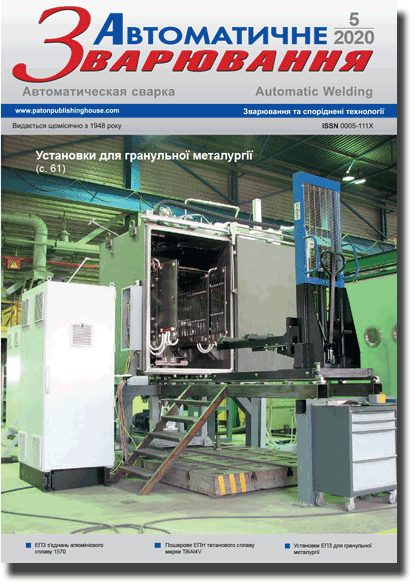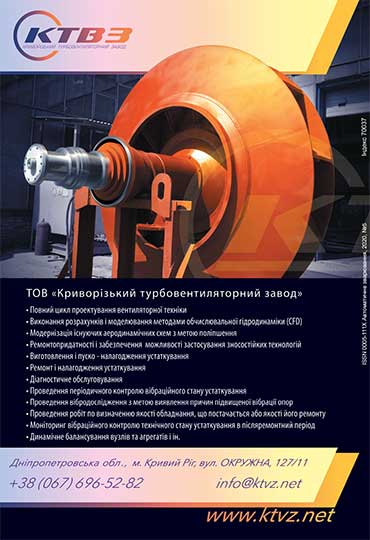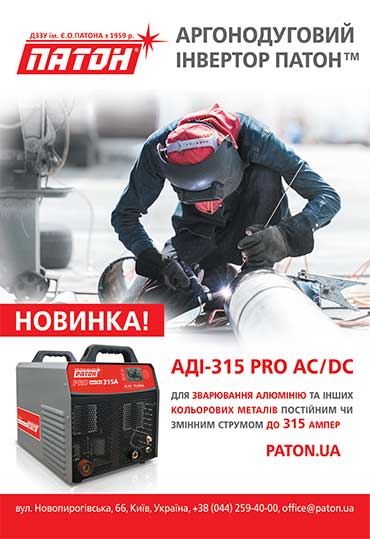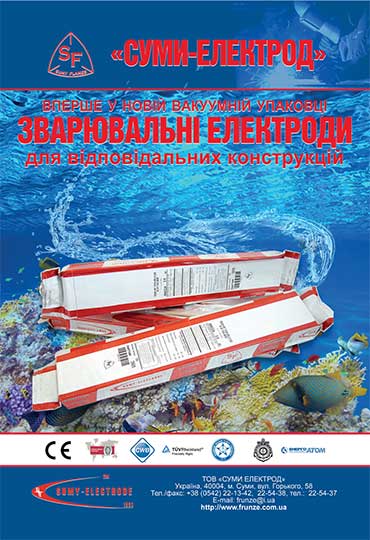| 2020 №05 (04) |
DOI of Article 10.37434/as2020.05.05 |
2020 №05 (06) |
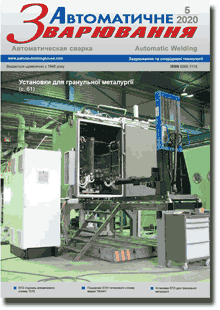
"Avtomatychne Zvaryuvannya" (Automatic Welding), #5, 2020, pp. 31-36
Microstructure of titanium alloys produced by the method of layered electron beam surfacing using the wire of grade Ti6AI4V
V.M. Nesterenkov, M.O. Rusynyk, O.M. Berdnikova, V.A. Matviychuk, V.R. Strashko
E.O. Paton Electric Welding Institute of NAS of Ukraine, 11 Kazymyr Malevich Str., 03150, Kyiv, Ukraine. E-mail: office@paton.kiev.ua
Using electron beam surfacing, the specimens of products of titanium alloy of various shapes using the wire of grade Ti6Al4V were produced. In the deposited layers no defects were detected. In the course of the work, the investigations of microstructure, phase composition and mechanical properties of the specimens were carried out. For the weld metal, the structure consisting mainly of lamellar-acicular ɑ'-phase is typical. The structure contains a small amount of β-phase, which lies in the form of thin layers between the acicular precipitations of ɑ'-phase. It is not detected using the optical microscope, however can be detected applying electron microscopy and X-ray examinations. The microstructure of the deposited metal is mostly equilibrium and granular, gradient in sizes and microhardness. The microhardness of the boundary zones diff ers from the microhardness of the grain matrix, which may be associated with the diff erence in the content of alloying elements. Towards the top of the built specimen, the hardness decreases slightly. 8 Ref., 1 Tabl., 9 Fig.
Keywords: additive technologies, electron beam gun, electron beam surfacing, titanium alloy, metallography, microstructure, microhardness
Received: 02.04.2020
References
1. Iliin, A.A., Kolachev, B.A., Polkin, I.S. (2009) Titanium alloys. Composition, structure, properties: Manual. Moscow, VILS-MATI [in Russian].2. Al-Bermani, S.S., Blackmore, M.L., Zhang, W, Todd, I. (2010) The origin of microstructural diversity, texture, and mechanical properties in electron beam melted Ti-6Al-4V. Metallurg. and Mater. Transact. A., 41(13), 3422-3434. https://doi.org/10.1007/s11661-010-0397-x
3. Popov, A.A., Illarionov, A.G., Rossina, N.G., Grib, S.V. (2013) Physical metallurgy and heat treatment of titanium alloys. Structure and properties: Manual. Ekaterinburg, UrFU [in Russian].
4. Zhukov, V.V., Grigorenko, G.M., Shapovalov, V.A. (2016) Additive manufacturing of metal products (Review). The Paton Welding J., 5-6, 137-142. https://doi.org/10.15407/tpwj2016.06.24
5. Matviichuk, V.A., Nesterenkov, V.M., Rusynik, M.O. (2018) Application of additive electron-beam technologies for manufacture of metal products. Electrotechnica & Electronica E+E, 3-4, 69–73.
6. Nesterenkov, V.M., Matviichuk, V.A., Rusynik, M.O. (2017) Principles of production of commercial items by rapid prototyping using electron beam technologies. In: Proc. of 8th Int. Conf. on Beam Technologies in Welding and Materials Processing LTWMP (Odessa, 11-15 September, 2017), 73-77.
7. Grabin, V.F. (1975) Principles of physical metallurgy and heat treatment of welded joints of titanium alloys. Kiev, Naukova Dumka, 263 [in Russian].
8. Zamkov, V.N. (1986) Metallurgy and technology of welding. Kiev, Naukova Dumka [in Russian].
Advertising in this issue:
The cost of subscription/purchase order journals or individual articles
| Journal/Currency | Annual Set | 1 issue printed |
1 issue |
one article |
| TPWJ/USD | 384 $ | 32 $ | 26 $ | 13 $ |
| TPWJ/EUR | 348 € | 29 € | 24 € | 12 € |
| TPWJ/UAH | 7200 UAH | 600 UAH | 600 UAH | 280 UAH |
| AS/UAH | 1800 UAH | 300 UAH | 300 UAH | 150 UAH |
| AS/USD | 192 $ | 32 $ | 26 $ | 13 $ |
| AS/EUR | 180 € | 30 € | 25 € | 12 € |
| SEM/UAH | 1200 UAH | 300 UAH | 300 UAH | 150 UAH |
| SEM/USD | 128 $ | 32 $ | 26 $ | 13 $ |
| SEM/EUR | 120 € | 30 € | 25 € | 12 € |
| TDNK/UAH | 1200 UAH | 300 UAH | 300 UAH | 150 UAH |
| TDNK/USD | 128 $ | 32 $ | 26 $ | 13 $ |
| TDNK/EUR | 120 € | 30 € | 25 € | 15 € |
AS = «Automatic Welding» - 6 issues per year;
TPWJ = «PATON WELDING JOURNAL» - 12 issues per year;
SEM = «Electrometallurgy Today» - 4 issues per year;
TDNK = «Technical Diagnostics and Non-Destructive Testing» - 4 issues per year.





